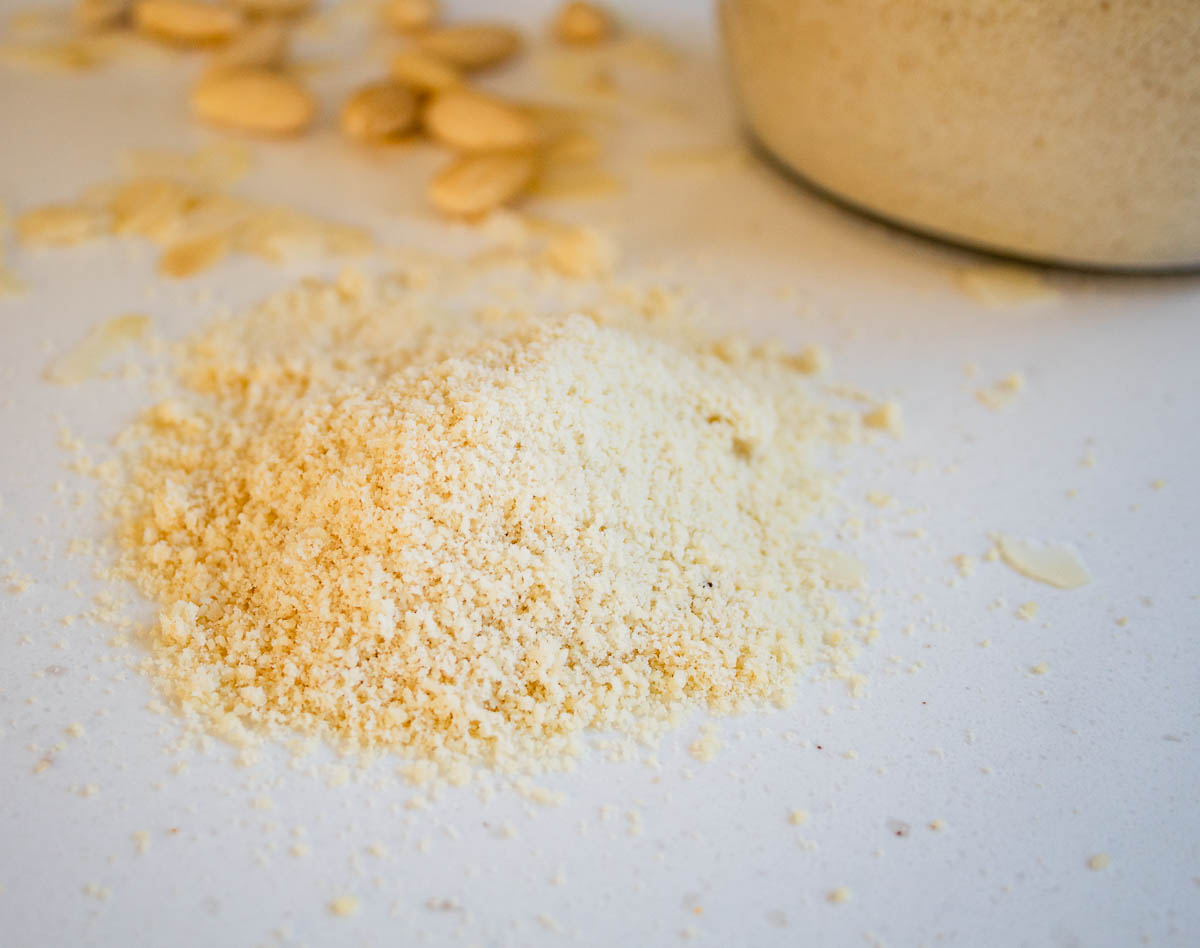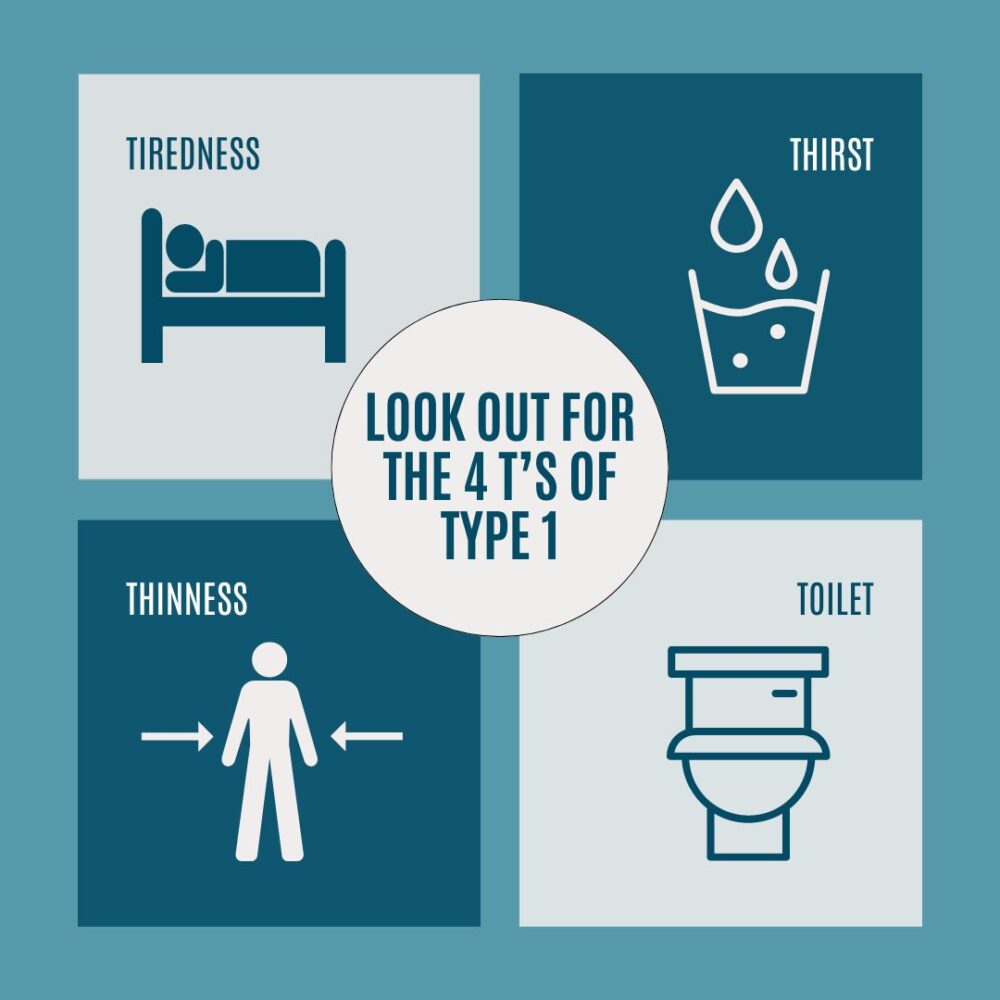I am an absolute convert when it comes to using almond flour in my baking, but why? And how do you use almond flour in baking? Can making this switch really help with my overall diabetes management? These are just some of the questions explored in this article, all about the benefits of using almond flour in baking.

I discovered baking with almond flour after our daughter was diagnosed in 2020 with type 1 diabetes. I was looking for lower diabetic carb count ingredients to help with those frustrating high blood glucose days. This was also accentuated by my daughter’s annoyance towards her diagnosis, feeling really hungry but not eating as it would only continue to raise her levels. This can be a persistent issue for many living with diabetes and is really hard to watch and manage as a parent.
So I threw myself into finding alternative ingredients which were diabetic carb count free and meant that she could get a little bit of that food freedom back when she needed it. And one of these ingredients I discovered as a switch in my baking was almond flour!
What is Almond Flour?
Almond flour quite simply is finely ground almonds. It is often used as a wheat flour replacement in baking and cooking as it is gluten free. However, it does seem to have a few different names and variations.
What is the difference between ground almonds, almond meal and almond flour?
Ground almonds can sometimes be called almond meal as well. This is basically a coarser version of almond flour and they tend to be ground with their skins still on.
Almond flour however involves a blanching process to remove the skins first before being finely ground into flour.
Both are great and very interchangeable in baking and cooking, so my recommendation is to use whichever you prefer and can easily buy.
You can find my recommended Almond flour products in my Shop.
Alternatively, I also use the 500g bags of ground almonds from Sainsbury’s but they are a little coarser and work out a bit more expensive.

Is Almond Flour Good for Diabetics?
When my daughter was diagnosed with type 1 diabetes, carbohydrates all of a sudden became a terrifying part of her diet. I threw myself into a lot of reading and research trying to understand the condition better and the complicated relationship food has with diabetes management. And during this process, I came across a lot of information and recipes for low carb and Keto diets.
Almond flour seemed to be a very popular ingredient in baking recipes and I wanted to know why. The reason for its popularity is that it is not only low in carbohydrates, but as it has a low Glycemic Index (GI) it means that it doesn’t have the same impact on blood glucose levels compared to grain flours.
Switching out regular wheat flour for an alternative lower carb count flour can be a great option for helping to manage blood glucose levels and insulin requirements. Particularly when you are newly diagnosed or when you are just having one of those days when being in range just seems impossible to achieve.
Some of the other benefits we have found in using almond flour are:
- The overall carb amount for a meal or snack is dramatically reduced
- Reducing the overall carb amounts also means we also reduce the potential error rate for insulin delivery
- My daughter can enjoy snacks without having to give any insulin
- And when her levels are not in range, eat without having to feel anxious
- She experiences less dramatic highs and lows with her blood glucose levels
- But most importantly of all, we are all enjoying discovering new sweet treats as a family
If you would like to read more about our journey as a family with type 1 diabetes and food then why not take a look at some of my other posts like THE BENEFITS OF A WHOLE FOOD DIET AND DIABETES and TYPE 1 DIABETES AND OUR RELATIONSHIP WITH FOOD
Also why not sign up to WHK so that you never miss a new recipe or blog post again? Plus as an added bonus you can also receive my FREE low and no carb snack guide:
Why use almond flour in baking?
So aside from its benefits as a tool in your overall diabetes management kit, almond flour or ground almonds can basically be used like traditional wheat flour. It does give a different feel to your bakes, for example, they can be a little denser and your biscuits are a bit more cake-like. But I have found that my bakes tend to be a lot moister and have a greater depth of flavour.
Other great reasons for using almond flour in baking are it is:
- Gluten-Free
- Packed with nutrients, particularly Vitamin E, Magnesium and Potassium
- High in healthy fats and fibre
- Has a low Glycemic Index, meaning it releases sugar slowly into your bloodstream
- Is higher in protein than wheat flour
- Has a rich taste profile

Almond flour nutrition compared to white flour
Almond flour has a rich nutritional profile full of healthy fats, fibre, protein, vitamins and minerals. This helpful table clearly highlights the difference between the two. However please be aware these figures do vary depending on the brand you are using.
| Almond Flour Per 100g | Plain White Flour per 100g | |
| Energy kcal | 641 | 352 |
| Total Fat | 55.8g | 1.4g |
| of which saturates | 4.4g | 0.4g |
| of which mono-unsaturates | 38.2g | 0g |
| polyunsaturates | 10.5g | 0g |
| Carbohydrate | 6.9g | 70g |
| Fibre | 6.2g | 4g |
| Protein | 24.6g | 10g |
| Vitamin E | 24mg | 0mg |
| Magnesium | 279mg | 23mg |
| Calcium | 271mg | 96mg |
| Potassium | 736mg | 114mg |
Tips for using almond flour in baking
Baking with almond flour is just as versatile as grain flours, but there are a few extra considerations to ensure that you get great results every time.
Here are my recommendations on how to achieve great bakes with almond flour:
- Think about the texture you want in your bakes – if you are looking for a lighter, fluffier end result, like in my FLOURLESS ALMOND ORANGE CAKE then you will want to use a finer, blanched almond flour. This one by Seba Garden is a good option. However, if you are looking for a little more texture like in my BANANA ALMOND FLOUR COOKIES WITH PEANUTS or LOW CARB APPLE GINGERBREAD CRUMBLE then opt for ground almonds instead.
- Storage – Keep your opened almond flour in an air-tight container in a cool, dark and dry location. A cupboard is perfect. However, some also suggest storing your almond flour in the fridge. This will help to extend its shelf life but isn’t something I have felt necessary as I use almond flour quite regularly.
- Don’t just convert wheat flour recipes 1:1 with almond flour – Whilst almond flour is a great baking alternative for wheat flour it does require a little tweaking and changes to quantities of other ingredients. This is because it has a higher fat content which can make bakes denser with more moisture. But the good news is I have done a lot of the hard work for you. So make sure to have a good look through my SWEET TREATS section, which is full of tasty bakes and desserts that predominately use almond flour.
- Almond flour bakes tend to brown quicker – You really have to keep an eye on your bakes as every oven is different and when you use almond flour they do tend to brown quicker. Therefore I generally cook at a slightly lower temperature. Also if you feel your bakes are browning too quickly you can always place a little parchment paper over the top 10 to 15 minutes before the end of cooking.
- Always leave your bakes to completely cool – due to the extra moisture content when using almond flour it makes your hot bakes very soft and unstable to the touch. Therefore always leave your almond flour bakes to completely cool before handling so that they have time to firm up.
- Separate your eggs – A method I have found to help make my bakes become even lighter is to separate my eggs and then add them back into the recipe at different stages. In particular, folding in the light fluffy egg whites as a final step helps to achieve even more lightness.
The Negatives of almond flour
So I want to be as balanced as possible. Whilst there are many great reasons from nutrition and blood glucose management for using almond flour in baking, there are also some downsides.
Firstly it’s more expensive – on average in the UK you are looking at paying just shy of £5.00 per 500g of almond flour whereas the equivalent 500g of plain white flour is as cheap as 20p
It is not suitable if you have nut allergies – It goes without saying but if you have a nut allergy it’s best to avoid using almond flour in your baking!
Has a higher calorie count and fat content – The fat content in almond flour is higher compared to wheat flour. Whilst it is mostly unsaturated fat, which is classed as a beneficial fat, it does also have a higher saturated fat content. So eating too much almond flour could lead to weight gain.
Could cause digestive issues – For some people eating too much almond flour (throughout the day) can cause issues like bloating, sickness and diarrhoea. Just be aware of how often and how much you are eating so you don’t let your body hit that point of tolerance.
To summarise using almond flour in baking
- Almond flour is a great alternative for diabetics and can be another helpful tool in your overall diabetes management toolbox. This is because it is low carb and has a low Glycemic Index (GI), meaning it won’t have the same impact on raising blood glucose levels compared to grain flour.
- It Is naturally gluten-free and has a rich nutritional profile
- It adds moistness and a fuller taste profile to your bakes and desserts
- However, it is more expensive, higher in calories and fat, and is not suitable for those with a nut allergy.
CLICK TO READ MORE ARTICLES ON THE BLOG









Leave a Reply